What is a 3 Day Workout Split?
A 3 day split is a workout plan that you work out 3 times a week. The purpose of a 3 day split is to target different muscle groups in each session, and to work them out in an isolated way.
It is designed to train different muscle groups every day so that you can rest and maximize strength gains while you’re working out. It can be a great balance between results and being time efficient.
A 3 day workout split can be a great way to plan your workout week if you’re pressed for time or don’t want to be in the gym 5 times a week. The different variations of a 3 day workout split are arguably amongst the most used by gym athletes all around the world.
Hevy Workout Tracker
Create your own workout splits with Hevy, and track your progress. Join +2M athletes.
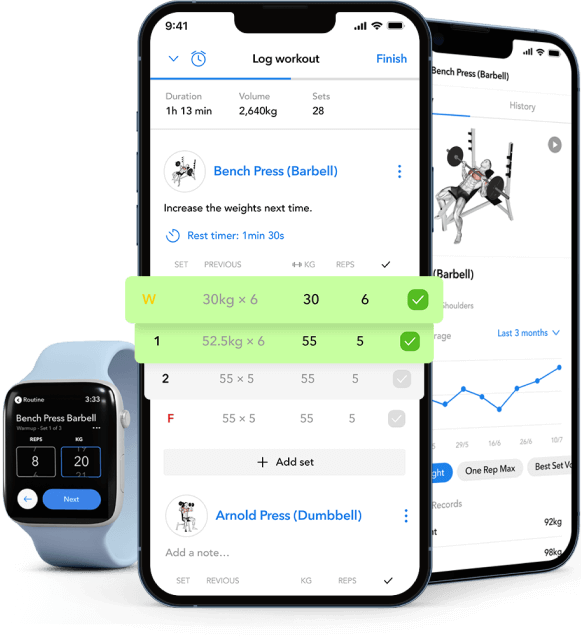
For Personal Trainers
Personal trainer software to build workout programs for your clients, and track their progress.
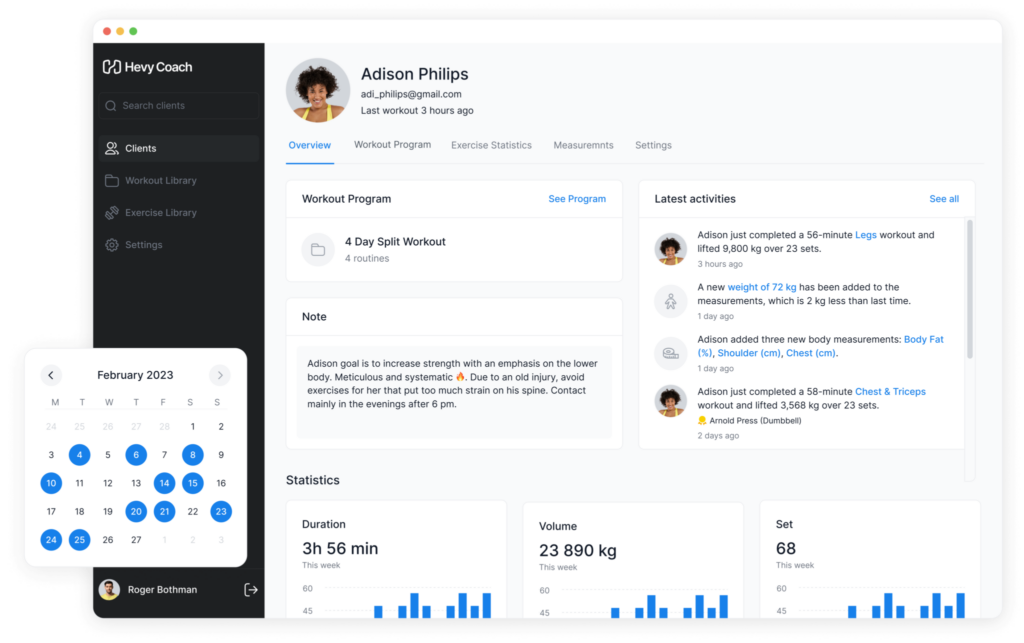



This can be quite effective, especially for beginners, since it allows for plenty of recovery time for the various muscle groups.
With a traditional beginner 3 day split, you will mostly only be working out a specific muscle group once a week, so that leaves around 7 days of recovery for that muscle group. If you are looking for a more advanced workout plan that involves high-volume training, we have the Arnold Split workout plan.
A 3 day split is one of the best options for beginners, due to its simplicity and ease in organization. Often, even a simple routine can lead to the best results if you just stick to it.
Popular 3 Day Workout Splits
Now let’s get it into some of the most popular and effective 3 day splits in gyms around the world.
Classic 3 day Bodybuilder Split
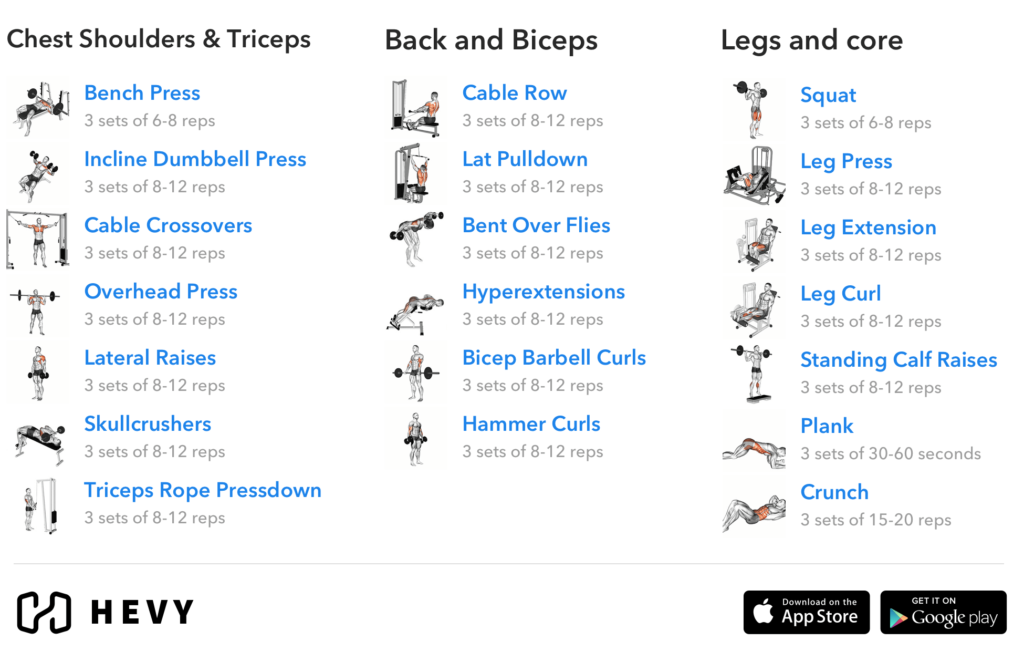

This is by far one of the most popular workout splits in the world. It splits the week into 3 days as seen below:
Workout 1: Chest Shoulders & Triceps
Workout 2: Back and Biceps
Workout 3: Legs and Core
Since these are just 3 workouts you need to do during the week, you can rest one day in between each workout and take the weekend off if you wanted to. This is an example of how you could schedule your week with the Classic 3 Day Bodybuilder Split.
Schedule
Monday: Chest Shoulders & Triceps
Tuesday: Rest day
Wednesday: Back and Biceps
Thursday: Rest day
Friday: Legs and Core
Saturday: Rest day
Sunday: Rest day
Lets jump into a little more detail for these workouts. The following workouts are an effective group of exercises that you could perform to target the desired muscle groups on each of the days.
Note: These workouts only include the working weight sets. We always recommend you warm up properly for each exercise. To learn more about warm-up, find more info here.
Chest Shoulders & Triceps
- Bench Press – 3 Sets (6-8 reps)
- Incline Dumbbell Bench Press – 3 Sets (8-12 reps)
- Cable Crossovers – 3 Sets (8-12 reps)
- Standing Overhead Press – 3 Sets (8-12 reps)
- Lateral Raises – 3 Sets (8-12 reps)
- Skullcrushers – 3 Sets (8-12 reps)
- Triceps Rope Pushdown – 3 Sets (8-12 reps)
Back and Biceps
- Seated Cable Row – 3 Sets (8-12 reps)
- Lat Pulldown – 3 Sets (8-12 reps)
- Bent-Over Fly Dumbbell – 3 Sets (8-12 reps)
- Back Hyperextension – 3 Sets (8-12 reps)
- Bicep Barbell Curls – 3 Sets (8-12 reps)
- Hammer Curls – 3 Sets (8-12 reps)
Legs & Core
- Squat Barbell – 3 Sets (8-12 reps)
- Leg Press – 3 Sets (8-12 reps)
- Leg Extension – 3 Sets (8-12 reps)
- Leg Curl – 3 Sets (8-12 reps)
- Standing Calf Raises – 3 Sets (8-12 reps)
- Plank – 3 Sets (30-60 seconds)
- Crunch – 3 Sets (15-20 reps)
Adjust the reps and weights to your capacity and level of fitness. The rest times in between sets will depend on your training objectives, and how hard each set was but as a general rule of thumb we recommend resting 1:30 – 3 min in between sets.
If you’re just starting out, you’ll want to be careful starting out too heavy. Gaining muscle is a marathon, not a sprint, and you won’t be able to make any gains if you’re injured.
Bonus! If you’ve still got energy left on the weekend, get some cardio in your workout split. Aim for at least 30 mins of cardio, whether that is running, rowing, biking, etc.
Push Pull Legs


An extremely effective workout 3 day workout split, is the Push/Pull/Legs split. Differently to the classic 3 day split, it does not split the workout sessions by targeted muscles, rather with the different types of movements you have to perform.
If you want to quickly create workouts, we recommend trying Hevy. You can easily create a personalized workout split and track your progress – for free!
Hevy Workout Tracker
Create your own workout splits with Hevy, and track your progress. Join +2M athletes.




For Personal Trainers
Personal trainer software to build workout programs for your clients, and track their progress.




In the Push workout, you train all the upper body “pushing” muscles such as chest, triceps and shoulders. In the Pull workout, you train all the upper body “pulling” muscles such as back and biceps.
In the Legs workout, you train the entire lower body, such as quads, hamstrings, glutes, and calves. Many athletes decide to add abs training on leg day as well.
Here’s an example of a Push Pull Legs weekly schedule:
Schedule
Monday: Push
Tuesday: Rest day
Wednesday: Pull
Thursday: Rest day
Friday: Legs
Saturday: Rest day
Sunday: Rest day
A Push Pull Legs workout routine could look quite similar to a 3 Day Bodybuilder split, except here we are focusing on the pushing and pulling movements.
Push
- Bench Press – 3 Sets (6-8 reps)
- Seated Shoulder Press – 3 Sets (8-12 reps)
- Incline Dumbbell Press – 3 Sets (8-12 reps)
- Lateral Raises – 3 Sets (8-12 reps)
- Triceps Dumbbell Extension – 3 Sets (8-12 reps)
- Triceps Rope Pressdown – 3 Sets (8-12 reps)
Pull
- Lat Pulldown – 3 Sets (8-12 reps)
- Bent Over Row – 3 Sets (8-12 reps)
- Face Pulls – 3 Sets (8-12 reps)
- Dumbbell Shrugs – 3 Sets (8-12 reps)
- Bicep Barbell Curls – 3 Sets (8-12 reps)
- Hammer Curls – 3 Sets (8-12 reps)
Legs
- Squat Barbell – 3 Sets (8-12 reps)
- Leg Press – 3 Sets (8-12 reps)
- Leg Extension – 3 Sets (8-12 reps)
- Seated Leg Curl – 3 Sets (8-12 reps)
- Standing Calf Raises – 3 Sets (8-12 reps)
This Push Pull Legs workout routine can be a powerful way to take your training to the next level or change things up. Like any training, when used diligently can yield great results.
Don’t forget that consistency is the secret sauce in the gym. Hitting any of these routines for at least 8 weeks will show significant improvements in both strength and mass when paired with a proper diet!
Upper Lower


The Upper Lower workout split is a little different to the previous workout splits mentioned previously in this article. That is because instead of dividing the target muscles into 3 different sessions, this divides it only in 2 sessions.
The Upper workout includes all the muscles in the upper body, and Lower includes the muscles in the lower body. This workout split can still be considered a 3 day workout split since you can be alternating your sessions in the following way.
Week 1: Upper/Lower/Upper
Week 2: Lower/Upper/Lower
… and so on. So your bi-weekly schedule could look like this.
Week 1
Monday: Upper
Tuesday: Rest day
Wednesday: Lower
Thursday: Rest day
Friday: Upper
Saturday: Rest day
Sunday: Rest day
Week 2
Monday: Lower
Tuesday: Rest day
Wednesday: Upper
Thursday: Rest day
Friday: Lower
Saturday: Rest day
Sunday: Rest day
So how is the Upper Lower workout split different? To begin with, it’s simpler because you are always alternating between 2 workout routines. If you like to keep things simple, this might be the workout split for you.
Another notable difference compared to the Push-Pull workout split, is instead of dividing the upper body muscles by push and pull, all of the upper body muscles are worked out in the same session.
Below is a sample Upper Lower workout split with a great combination of exercises for maximum muscle gain.
Upper
- Bench Press – 3 Sets (8-12 reps)
- Barbell Bent Over Row – 3 Sets (8-12 reps)
- Lat Pulldown – 3 Sets (8-12 reps)
- Seated Shoulder Press – 3 Sets (8-12 reps)
- Lateral Raises – 3 Sets (8-12 reps)
- Bicep Barbell Curls – 3 Sets (8-12 reps)
- Hammer Curls – 3 Sets (8-12 reps)
- Triceps Dumbbell Extension – 3 Sets (8-12 reps)
- Triceps Rope Pressdown – 3 Sets (8-12 reps)
Lower
- Squat Barbell – 3 Sets (8-12 reps)
- Leg Press – 3 Sets (8-12 reps)
- Leg Extension – 3 Sets (8-12 reps)
- Seated Leg Curl – 3 Sets (8-12 reps)
- Standing Calf Raises – 3 Sets (8-12 reps)
Like the Push-Pull Legs workout split, many athletes decide to incorporate core training in their “Lower” workout session.
The Upper Lower workout split can provide certain advantages as opposed to other workout routines. Since you’re always alternating between two workouts, that means that you train the muscle groups at a higher frequency.
Training using the upper-lower split means you will be able to workout any given muscle group twice a week every two weeks, given that you are alternating Upper/Lower/Upper on week 1, and Lower/Upper/Lower on week 2.
Full body training split
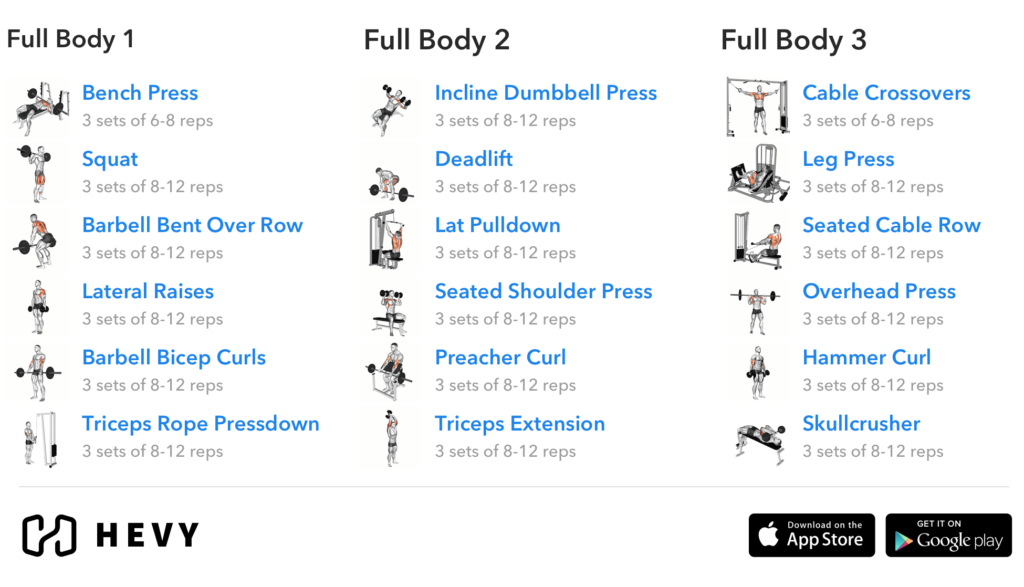

The full body workout split is a workout split where you workout every major body part is worked out in every session.
Some research suggests athletes gain muscle quicker when training a given muscle group at a higher frequency. Instead of training out a given muscle once a week, training them two or three times per week.
Even though we’re training full body every session, the 3 day full body workout split will still have 3 different workout sessions. A weekly schedule for a full body training split could look like the following.
Schedule
Monday: Full Body 1
Tuesday: Rest day
Wednesday: Full Body 2
Thursday: Rest day
Friday: Full Body 3
Saturday: Rest day
Sunday: Rest day
If you wanted to only have two different workout routines instead of three, you could also alternate your workouts between the two routines, and schedule them as the Lower/upper split.
Let’s take a look at a sample 3 day full body split.
Full Body 1
- Bench Press – 3 Sets (8-12 reps)
- Squat – 3 Sets (8-12 reps)
- Barbell Bent Over Row – 3 Sets (8-12 reps)
- Lateral Raises – 3 Sets (8-12 reps)
- Bicep Barbell Curls – 3 Sets (8-12 reps)
- Triceps Dumbbell Extension – 3 Sets (8-12 reps)
Full Body 2
- Incline Dumbbell Press – 3 Sets (8-12 reps)
- Deadlift – 3 Sets (8-12 reps)
- Lat Pulldown – 3 Sets (8-12 reps)
- Seated Shoulder Press – 3 Sets (8-12 reps)
- Preacher Curls – 3 Sets (8-12 reps)
- Triceps Dumbbell Extension – 3 Sets (8-12 reps)
Full Body 3
- Chest Cable Crossovers – 3 Sets (8-12 reps)
- Leg Press – 3 Sets (8-12 reps)
- Seated Cable Pull – 3 Sets (8-12 reps)
- Overhead Shoulder Press – 3 Sets (8-12 reps)
- Dumbbell Hammer Curls – 3 Sets (8-12 reps)
- Skullcrusher – 3 Sets (8-12 reps)
As you can see, each routine is completely different, yet is still working all the major muscle groups in each session.
Full body workout splits tend to incorporate compound movement exercises, where with one exercise you target multiple muscle groups. In this sample full-body workout split, we have compound movements like bench press, deadlifting, and squatting. While not exactly a 3 day split, a 5×5 workout plan consists of 5 barbell compound movements, and is also a great plan to get results.
One of the advantages of full-body workouts is muscle symmetry. We all know that friend with a huge chest and skinny legs because they skip leg day. Full-body workouts help prevent overcompensation in certain muscle groups!
These are just a few of the most popularly used 3 day split workouts available for your liking. You can customize these workouts to the fullest extent and make sure that you are using the gym to your advantage for your goals.
Let us know in the comments what type of 3 day workout split you chose and why!
Equipment
The equipment used in these 3 day workout routines are pretty standard. The majority of exercises can be completed with a barbell and dumbbells. You can expect every regular gym to have the required equipment to perform your workout routine effectively.
However, gyms have been recently shutting down over the COVID-19 pandemic, so many gym athletes are choosing to bring their gym home.
Home Gym
When planning on creating your own home gym you must consider you’ll need a few essentials.
Dumbbells
Dumbbells can be an incredibly useful and flexible piece of equipment. You can surely put in a solid workout using only dumbbells, and they don’t take up a lot of space.
When looking at dumbbells you have several options, buying old-school normal dumbbells, or a more advanced technology where you can adjust the weights of the dumbbells like the Bowflex SelectTech Adjustable Weights. If you’ve never seen anything like this, they are quite incredible.
Some traditional dumbbells are also widely available, as seen below. These will also do the job, although they will take up more space. We recommend you check out these Rubber Hex Dumbbells out.
Is a 3 day split for me?
When we hear this question of whether the 3 day split is for a specific person, we always have to ask them first what their goal in the gym is. So which of the following questions below do you feel identifies you the most?
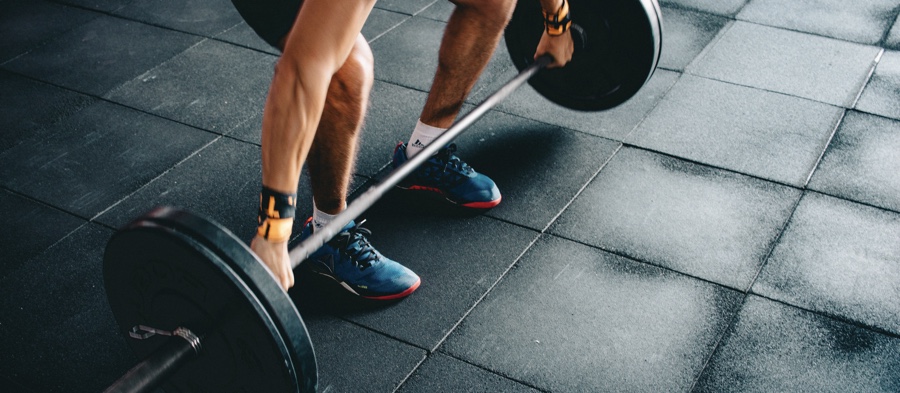

I am looking to gain muscle and strength
For someone that is looking to gain muscle or strength, it is important to know that if you are consistently going to the gym and lifting weights that cause stress to your muscles, you will have micro-tears in your muscles and this will cause the muscle to grow.
Having a consistent and organized 3-day split workout during a week will stress your muscles in targeted areas and you will see significant gains. It is all about your ambition and how consistently you keep your schedule. If you’re looking for a 4 day split instead, check out our article on that. If you’re purely looking to gain strength, perhaps check out the 5×5 plan.
Additionally, we cannot forget the very important role that diet plays in gaining muscle and strength. Being able to be in a calorie surplus will be the fastest thing that will allow you to gain weight and as a result muscle and strength.
I am looking to get leaner
Getting leaner doesn’t always have to do with working out and your specific workout routine. Most of the time getting leaner simply involves getting all of the main pillars of fitness optimized. The three pillars that we stand behind are activity, rest and diet.
Making sure that you’re moving and being active enough to burn more calories than you consume is one of the basic notions of losing weight. Next, making sure you get enough rest so your body can properly recover from that activity is also an essential part of getting leaner.
Finally and perhaps the most important pillar of them all is diet. There are plenty of diets and styles of eating that have become more popularized, ranging from Keto, Paleo, Vegan or the controversial carnivore diet.
People claim to have varying levels of success with each diet so trying each diet out to see which one fits your lifestyle best is always the best-case scenario. Nonetheless, it is important to note that the simplest form to lose weight is to limit the number of calories you are taking in.
It is always easier to avoid eating 100 calories than spending 10 minutes running to burn those same 100 calories.
To answer the question, the 3-day split can be implemented for anybody trying to get leaner, making sure that the body is being correctly trained and that enough calories are being burnt to have a calorie deficiency and lose weight.
Warm-Up Sets
The workout splits given above all have the routines with the number of working sets we recommend doing. However, we always recommend warming up properly for your workout and for each exercise.
Especially for heavy lifts, you should definitely be doing some exercise-specific warm-up to get your body ready for the heavy lifting you will perform. Warming up will also allow you to practice the form of the exercise without the heavy load.
We recommend warming up with at least one or two light sets with little weight and working your way up. For example, if you’re getting warmed up for squats, you could start your warm-up by squatting just the bar, and then increasing weights until you reach your working weight.
If your working weight is lower than a normal-sized Olympic barbell, you could take a couple of dumbbells and warm up with lighter weights.
Naturally, warming up will make your workouts take longer to finish. This is totally okay, but you need to make sure that you’re taking your warm-ups seriously and not wasting time. Your workout begins when you start warming up, not when you start using working sets.
Also, take into consideration the increments of weights in your warm-up. If you take 10 warm-up sets to warm up, you will have wasted a ton of energy before even starting the real workout. Aim for 2-3 warm-up sets and increase weights with a big enough difference between each set.
What are the benefits of doing a 3 day split workout?
When we take a look at professional bodybuilders, people that are competing in events that take their training extremely seriously, they are most likely not following a 3 day split. For their specific goals of extreme growth, they are faced with an extreme training regiment.
IFBB athletes will at times train multiple times in a day. We do need to take into account that the amount of food they are intaking is matching their level of training for growth so every time they tear their muscles they put enough nutrients in their body to recover properly.
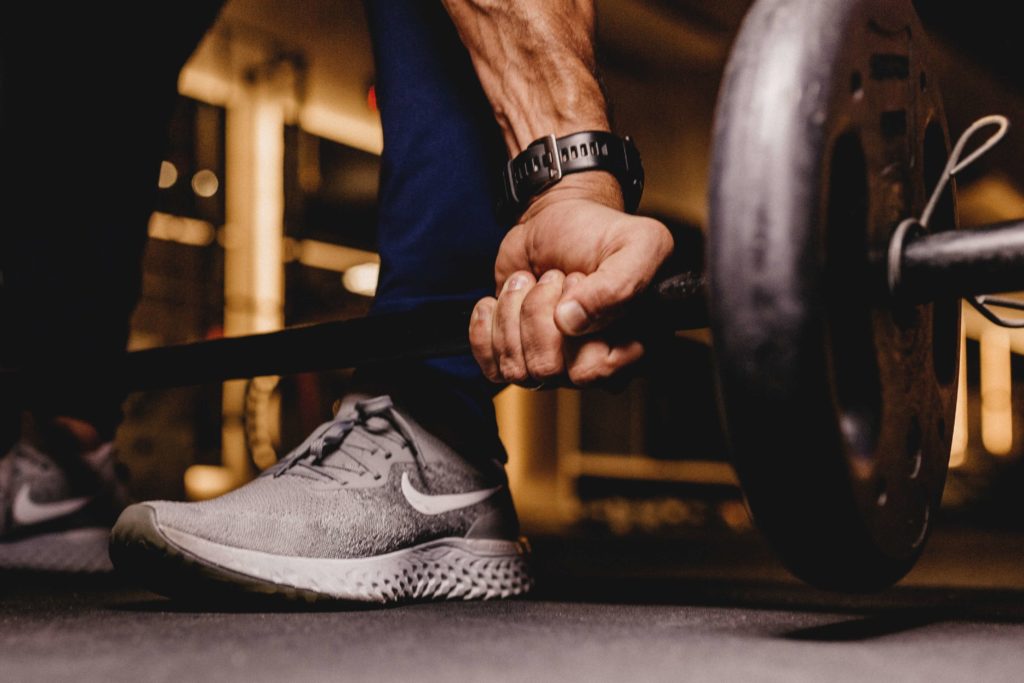

The benefits of doing a 3 day split workout is that it works for the majority of people. It will work for people that aren’t aiming to compete professionally in bodybuilding events and are simply looking to stay active, and gain muscle.
The 3 day workout split allows you to workout your full body while having proper rest throughout. It is extremely effective for those that stick to it and have proper consistency.
Best apps to use for my 3 day split?
When going to the gym consistently, knowing how much you started lifting at is absolutely essential to your gains and mental strength. Taking notice of your significant increases in strengths will make you extremely motivated to keep going and improving!
Using a workout tracker like Hevy will allow you to track everything seamlessly during/after your workout and will allow you to see what your friends are lifting.
This creates a completely different gym environment for yourself. Learn how you can get stronger with hevy.
Getting to the gym, knowing your routine and how much weight you lift, as well as being able to compare with your friends to see how much they are lifting will prove extremely enjoyable.
If you’re tired of your gym routine don’t hesitate to try out our recommended routines for specific muscle groups and just like our hero Arnold says “ Shock the body!”
Another extremely useful app that we see our athletes using for the gym is myfitnesspal. This app is a wonderful add-on for tracking all of your calories throughout your day. The ability to scan a barcode is what makes it an over the top incredible app.
Making sure you’re eating over a caloric surplus is the most important thing for someone trying to bulk up. For this reason tracking, every calorie you put in your body and being in control of that aspect of your gym routine will have a significantly positive effect on your training.
The more control you have of variables that are essential to your training like your diet and consistency and tracking in your training the better results you will see in the short and long term.
3 day split vs 5 day split?
Deciding between doing a 3 day split and a 5 day split can always be a bit challenging but mostly depends on your availability to head to the gym and your willingness to go.
A 3 day split is a comfortable start for beginners to work out their full body in 3 separate sessions for a selected group of muscles.
A 5 day split will be a more specific breakdown into those specific muscle groups. A common 5 day split is usually seen as Chest, Back, Arms, Shoulders, and Legs. If you’re able to go to the gym 5 times a week consistently then a 5 day split could be for you.
For people that have a limited amount of time in the gym a 3 day split might make more sense. The difficulty comes in when you aren’t consistent with a 5 day workout split and you miss shoulders day, and the next day you continue on with your split.
This will lead to an extensive break until the next time you hit shoulders properly leading to a deficiency in growth in comparison to other muscle groups.
Additionally, 5 day splits don’t allow you to have many breaks in between workouts, so if you’re used to the fatigue that you may develop from workouts then go ahead, but beginners should be careful with such high intensity.
The reason some bodybuilders decide to pick 5 day splits is to spend more time doing different exercises to hit the same muscle, but at times it is not necessary as long as you create enough stress during 3 day splits.
How long should I follow a 3 day split to see results?
It is recommended that beginners follow the 3 day split for at least 8 weeks to start seeing improvements in strength and muscle gain. The level of results really depends on your level of intensity in the gym.
When first getting into the gym, because your body is not used to working out at all, it will be a complete shock to it. For the first few months, your body will grow (considering that it is supported with a caloric surplus in diet) and show significant improvements.
The marginal level of growth of both strength and mass will decrease the longer you go to the gym and gaining more muscle will become more of a task. The same is true for someone who is overweight.
Someone who is overweight and doesn’t do any exercise will see significant changes in their physique and strength once they start going to the gym. The initial months will see drastic changes because the body is not used to all the movement.
However, as the pounds keep shedding off, the momentum of weight loss will decrease as your body gets used to the level of movement and strenuous exercise you put it through.
Being consistent in the gym and with any physical activity will show the best results for anyone trying either to gain weight or to lose weight. The level and size of results will only depend on your intensity within the gym.
Should I be taking supplements for my 3 day split workout?
The question of supplements is often tied with the question of the athletes’ diet. How much protein is the athlete consuming? Is the athlete in a caloric surplus? Is the athlete looking to gain weight?
There are a lot of variables that you need to take into account before you go buy protein powder, creatine, and pre-workout.
For people that are starting to get into their gym routine and are looking for muscle gains and strength gains we always recommend first putting a priority on improving their diet. Are you eating enough? Is your diet already naturally rich in protein? Ask those questions first.
If you have trouble eating enough calories to be in a caloric surplus, switching to drinking your calories can always be beneficial. What we mean by drinking your calories is by adding something like a mass gainer or a protein shake to your meals for extra calories.
If you have your diet properly structured and looked after, these are the options that you should consider for the possible supplements.
These are some of the available supplements the athletes choose to add to their diet:
Pre-workout.
This supplement is meant to keep your energy levels high during a workout. Showing up to the gym after a long day of work, or very early in the morning can already be enough of a task.
Now having to perform properly at the gym and push yourself enough to cause stress on your muscles is always the toughest part of the gym, especially if you’re tired or distracted.
Commercial pre-workout can include and be made of a variety of ingredients such as caffeine, beetroot juice and creatine (another supplement we will talk about later).
Other people choose to simply add a coffee to any meal they have before their workout or an energy drink to make sure they have the energy for the workout. This is purely based on your energy levels and if you’re being productive during your gym session.
Completely up to you!
Protein Powder
Your decision to take protein powder is once again depending on your diet. The recommended daily amount of protein intake to prevent deficiency is 0.36g per pound of body weight or 0.8 per kg of bodyweight.
People who train often are recommended to take double the recommended daily amount to 0.72g per pound of body weight. The trouble always comes from having to stuff yourself with large quantities of protein at times when you might not want to.
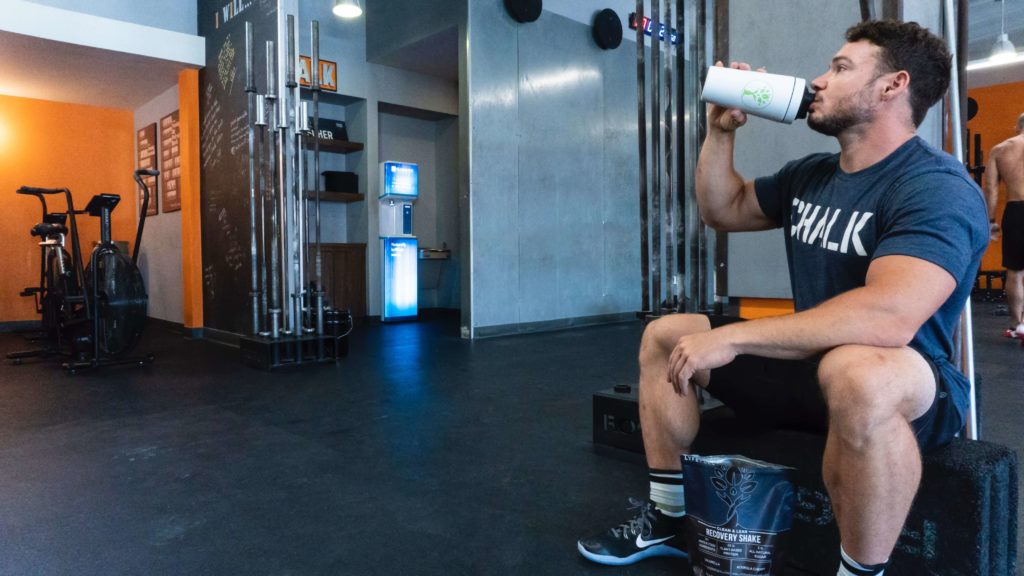

Having a steak for breakfast or a filet of salmon isn’t always the most appetizing thing. For that reason having a simple protein shake and adding other tasty things like fruits and oats for the calories as well as milk for the fat content will be an easy addition of calories to the diet.
The type of protein powder you get is totally up to you, with more studies coming out on people’s difficulty with digesting dairy products we’ve found more people picking vegan proteins than the standard whey protein powders.
There are plenty of vegan proteins to pick from, pea protein, soy protein, hemp protein, and the list goes on and on.
Do make sure that when adding protein powder to your diet consult with a medical professional if necessary or look up all of the pros and cons that this could have for your health such as the toll that consuming too much protein could take on your liver and kidney.
Creatine
Creatine, as we mentioned before, could be present in your pre-workout, but what exactly is it? Creatine is a very powerful supplement that those that take their gym routines seriously will consider taking in order to gain strength and endurance.
Creatine is found naturally in our body and this supplement is known to supply more energy to our muscles in the form of ATP (Adenosine Triphosphate). ATP is used up by the body for muscle contractions among other things.
Creatine has been found to improve an athlete’s muscular performance, growth, and helping the muscle recover quicker. This supplement has also been found to increase your physique into a more blown up and full figure because of an increase in water retention in your muscles.
For this reason, it is recommended to increase your water intake once taking creatine because you can easily become dehydrated after starting to take creatine.
Always consult with a medical professional before taking a supplement like creatine, as these supplements aren’t as strictly looked after by the FDA and could cause secondary side effects.
BCAA’s
BCAA’s are known as branch chain amino acids, these are essential amino acids that your body doesn’t produce and that you need to get through eating foods with high protein. Amino acids are known as the building blocks of protein.
BCAA’s are also known for preserving stores of glycogen in our muscles, which help prevent the breakdown of protein when exercising.
BCAA’s give your muscles an important store of energy while you’re working out and used frequently among those in the IFBB professional bodybuilding world.
If you’re serious about gaining weight and increasing muscle mass these could be a positive addition to your supplements. As always consult with a medical professional to know the pros and cons and the possible side effects of adding this to your diet.
FAQ’s
What is a 3 day split workout?
A 3 day split workout in its simplest form is working out 3 separate muscle groups on different days of the week. This is done to fully work out each muscle group individually and have enough time for the muscle group to rest.
One of the most famous types of 3 day splits is Push, Pull, and Legs. This would basically mean that you would break down the week within exercises separated by Push – usually, any chest, shoulders and tricep exercises, Pull – any back and bicep exercises and legs.
The magic of the 3 day split is that you can customize it completely to your liking, as we’ve shown above.
How much rest should I get for growth?
From a large range of articles found online, we recognize that the amount of rest depends more on the athlete than on the specific workout. Depending on the intensity and level of soreness that you feel, you should take more or less rest.
As an example, someone who is starting out with a 3 day split workout – Push, Pull, Legs – will have a hard time coming back to the gym the day after a workout day.
That person might take between 3 and 4 days off for resting between each workout day. That is completely fine as we also don’t want to train on a completely exhausted body.
It is also important to note that the 3 day split is optimized for athletes to be ready to work out the next muscle group as soon as possible given that the muscle group that they recently worked out will not be influenced in the following workout.
For example, even after a heavy Push workout where you’ve worked out your chest, shoulders, and triceps intensely, hitting legs the next day should not be a problem. You will not be using your chest significantly in a leg workout.
As a measure of standard, it is recommended to have at least two days of rest between each workout day for a beginner.
Nonetheless, we have plenty of athletes on our app that workout 6 days a week and will only take Sunday as a rest day after doing two consecutive 3 day splits.
In conclusion, when you feel like you’re ready to lift heavy again, head to the gym!
Should I do a 3 day workout split as a beginner?
As a beginner, the most important thing is developing a proper form to make sure that injuries are always prevented.
Once the form is properly developed and you feel comfortable doing the exercises you have chosen for your 3 day workout split, a 3 day split is a fantastic idea for a beginner.
Developing a routine that works out your full body such as the 3 body split will show significant improvements in both strength and muscle gains. This is a great start for people heading into the gym for the first time and to get a taste of what different exercises feel like!
When doing a 3 day split workout, when should I do cardio?
Most three day splits do not include cardio as a necessity, meaning that you need to take cardio into your own consideration. Doing cardio could be used as a productive warmup for any workout, and we highly recommend doing some type of cardio to get your body warmed up.


However, doing a cardio warmup versus doing a session of strictly cardio to burn calories will have to be prioritized for a different day. Just remember that the level of intensity of cardio could affect your performance depending on what cardio you choose to do so be smart about it!
How is a 3-day split different from a “Bro Split”?
A Bro Split is commonly known as the isolation of 1 or 2 muscle groups per workout. A typical Bro split can be seen as the following:
Monday: Chest
Tuesday: Back
Wednesday: Legs
Thursday: Calves, Shoulders
Friday: Arms (Biceps,Triceps, Forearms)
So, how does a 3 – day split differentiate itself from a bro split? The typical 3 day workout split attempts to (much like the Bro Split) target all muscle groups in the body through different days of the week.
The bro split, however, is made as such that you will, whether you like it or not, you will overlap different muscle groups that have been worked out maybe sooner than needed for optimal muscle growth.
For this reason, we prefer the 3-day split to the bro split as we feel that you wouldn’t have enough days of rest for proper muscle development.
Is working out 3 days a week enough?
Everything is always dependent on your intensity. The number of days you choose to workout depends also on your goals and the amount of you have on your hands to workout!
For someone who is just starting out, any level of exercise will have a significant effect on your body and mind. Doing a 3 day split once a week to build proper strength and stamina is a fantastic way to start out and to cement your gains at the gym.
For those that are more advanced and have more experience at the gym doing only one 3 day split a week might not seem like enough. For that reason, you can incorporate a second 3 day split in a week and rest in whichever way you choose.
In conclusion, working out 3 days a week is enough if you’re new to the gym and you’re not used to the muscular strain. For those who are more advanced, if three days a week is not enough, moving on to a 4th and 5th training session might be recommended. If you only have time for 3 weekly workouts but want to increase the intensity, you can try a workout plan like the German volume training or Madcow 5×5.
Can I do a bodyweight 3 day split?
Absolutely! Switching any in-gym exercise with bodyweight is always a possibility and recommended for people who are just starting out in the gym.
For example, you can substitute bench press with pushups, barbell squat with the simple bodyweight squat and easily incorporate pull-ups or ring rows for back workouts.
Starting off with bodyweight exercises to gain proper strength is always recommended before starting to add more weight and build more muscle. You will have a hard time benching any significant type of weight if you cannot do 10 unbroken push-ups with your own weight.
The same goes for weighted squats. Developing a proper squat technique with good mobility is absolutely essential for a gym-goer. When you’ve already developed enough strength for bodyweight squats try doing goblet squats to prepare for barbell squats!
What are the main 3 day split exercises?
It is always hard to answer this question, and as always it depends on what your goals are in the gym. For the average 3-day split gym goer that is trying to gain strength and muscle the most important exercise in each classic bodybuilder 3 day split would be the following:
For the Push days hitting chest, triceps, and shoulders, the most important compound exercise would be the bench press. Developing proper strength in the bench press will allow you to progress in other heavy upper body lifts.
For Pull days hitting back and biceps, the most important compound movement/exercise that we see our athletes doing is the pull-up. Being proficient at pull-ups and comfortably doing 4 sets of 10-12 will show great advances in other back exercises.
Advancing from bodyweight pull up will allow you to do weighted pull-ups and chin-ups and this will greatly increase your general strength.
For those athletes looking for a more complete workout on their lower back on pull days, the essential exercise is the deadlift. Developing a good deadlift technique will complement a variety of other lifts.
Leg days have the obvious squat as the best overall exercise to do. To start out, it’s always best to focus on improving your mobility and making sure that you can go slightly under parallel between your hip bone and your knee.
Once your strength has developed to the point where body weight is too easy, start off attempting with the bar itself given that it’s already 20kgs (45lbs). Once that feels light enough and you can easily move and break parallel start adding weights and you’re on your way!
I am worried about overtraining with a 3-day split workout.
Overtraining is often something that beginners are worried about when heading into the gym for the first time. This is especially true once they start the first few sessions and feel an intense delayed onset muscle soreness (DOMS).
The question of whether they are overtraining, and whether the strain they are putting on their muscles is normal and good for them.
The reality is that anytime you are putting your body under stress it will develop microtears in its muscle fiber and will be then repaired as a result of growth. Beginners will know not to be afraid of the muscle soreness and even learn to enjoy it!
The problem of overtraining will be developed with those athletes that don’t have enough rest days. This is something more personal that as an athlete you need to gauge depending on your level of exhaustion the day of working out.
Working a muscle group when it is still extremely sore could lead to damaging the muscle and putting pressure on delicate joints as your muscles will be too tired to do the important work.
It is also important that with fatigue, and muscle soreness our form will be limited. Letting your form suffer under heightened levels of fatigue will just cause improper lifting techniques and can be extremely detrimental to your body.
Taking the gym seriously means taking your whole body and how it’s feeling seriously. Showing up and doing a proper warm-up and finishing with targeted stretching will make your body feel better the next time you are training.
The topic of overtraining needs to be made on a day-to-day basis depending on the previous level of intensity that a person has been putting in the gym.
What is the best warm-up for a 3-day split?
The thing about warm-ups for any type of split or workout at the gym is that it should be conscientious of the movements and exercises you are about to do.
A simple example that we always see our athletes doing is during leg days they will have some form of cardio that warms up their legs. It seems easy enough to think of but gets a bit more tricky when you are thinking of warming up your shoulders.
It is sometimes recommended that gym-goers do some type of cardio for warm-up to get their body warmed up and then do an additional specific warm-up to the muscle groups that they will be working out.
For example, starting off with some simple running on a treadmill, hopping on an exercise bike, or even doing some jump rope will get your heartbeat going and make you feel a bit more prepared to endure the workout.
In addition, doing some mobility exercises for your arms, shoulders, wrists, knees, and hips will allow your body to be more prepared for the workout.
There are plenty of warm-up routines that you can find online that will be helpful for any workout routine you are following.
How long should my workouts be in a 3 day split workout?
The length of your workouts as always, is mostly dependent on your schedule. Given that you are only hitting the gym a total of 3 days in a week usually, athletes will spend a decent amount of time in the gym properly hitting each muscle group.
The workout itself without counting the proper warm-up and cool down with stretching should last between one hour to one hour and a half.
Nonetheless, it is important to note that the length of the workout shouldn’t be limited strictly to a time cap but more than anything you should leave the gym with a decent amount of stress on the muscles your workout and feeling the famous “pump”.
Let us know in the comment section down below how long your workouts are if you’re doing a 3 day split.
Can I do other exercises during my rest days (Play sports etc.)
This question is usually asked by beginners who still haven’t gaged the amount of fatigue that they will develop from going to the gym consistently. It is impossible to say without knowing your exact workouts and the level of intensity you deliver.


Making sure that you don’t pick an exercise that is too strenuous is key to the performance in the gym. This is also true when accounting for diet if your looking to gain mass through this 3 day split.
Making sure that you’re accounting for the calories you are burning during the other exercise you are doing on your off days is an absolute necessity to make sure you are in a calorie surplus accounting for all the exercise you do.
Having intensive cardio days before doing heavy legs workout will possibly limit your strength and performance as your body is still fatigued and strained from the cardio. Also, keep in mind that the more strained your body is while exercising the higher risk for injury.
If you feel like having a rest day or two, go for it! You are building your own lifestyle, and you shouldn’t feel forced to do exercise every single day.
Nonetheless keeping active is an essential part of a healthy lifestyle so we definitely won’t stop you from it!
How many sets should I do per muscle group?
If we’re considering that an athlete is going for muscular growth and mass it is recommended that you work out the larger muscle groups more than the smaller ones as you could imagine.
For each workout we see athletes following these general guidelines:
- For larger muscle groups like your chest, back, shoulders and large groups of muscles in your legs like your quads should have between nine to fifteen sets for utmost mass. These will most likely include different variations to hit different sides of the muscle.
- Smaller muscle groups will have between six to nine sets each workout. These muscle groups represent smaller muscles like triceps, biceps, calves, hamstrings, and abs.
- The final muscle group is the smallest of them all representing your traps, forearms and rear delts. These are usually worked out between one to four sets each workout.
Once again, depending on the level of intensity and your goals these can easily be shifted up or down. It is all dependent on what you’re looking to get out of the gym, and how much you’re willing to endure!
A final note!
We want everyone to be healthy and active. Any type of movement will be beneficial to your body and will only do great things for your body!
Going to the gym is just one of the ways to stay active and we hope that you take this complete guide of 3 day split as a good introduction into the theory and understanding of what it takes to be successful at the gym depending on your goals.
These are the top 5 ideas that we think summarize this complete guide of 3 day lifting for everybody who goes to the gym:
- Starting slow, and making sure that form is correct. Don’t get to the gym expecting to lift the same as everybody else. Especially don’t feel ashamed about starting off with less weight than everybody else, everyone was there at some point or another!
- Being consistent! Consistency is the name of the game and significant results won’t be seen without it. Taking care of tracking your routines and making sure that you see results over time will be extremely motivational, get on Hevy!
- Make sure you’re taking care of all of the variables outside the gym. That includes diet and recovery. Take care of your body and listen to it! Be responsible with your warm-ups and with your cool-down stretches, your body will thank you when you’re older.
- Bring intensity to your workout! You will not see proper results without consistency and more importantly if you’re not consistent with your intensity. Make sure you’re leaving the gym feeling content about your intensity as you’re working towards your goals.
- Set realistic goals. Make sure, to be honest about how much your body can take and how much you can push it. Don’t lift with your ego, lift to become a better athlete and to be in better shape!
We hope this 3 day split guide has been informative and motivational for you and that you will soon be headed to the gym with more confidence than ever! As always don’t forget to download our app and we wish you the best of luck with your 3 day split workout routine.
If you’re interested in learning how we built our app, check out our last post!
We’ll see you on Hevy!
Hevy Workout Tracker
Create your own workout splits with Hevy, and track your progress. Join +2M athletes.




For Personal Trainers
Personal trainer software to build workout programs for your clients, and track their progress.




This post was written with the help of the wonderful people at HealthFitMag.

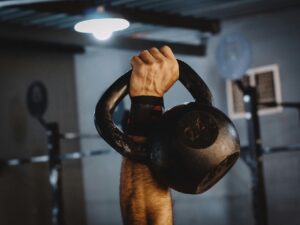

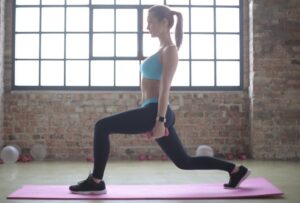
7 thoughts on “3 Day Split Workout – The Complete Guide (2024)”
Thanks for the wonderful guide! I am relatively new to the gym and was thinking whether or not I should start a 3 day guide or a 5 day guide. This helped me decide. I’ll download the hey app hopefully it helps.
This is EXACTLY what I was looking for, THANK YOU!! You made this gal EXTREMELY happy! Installing Hevy app right NOW! 😃
Couldnt of asked for something more perfect.
The workout plan
The App to track
and all the info needed to decide what I need to choose and why
PERFECT!! Thank you so much!
I am interested in starting the UPPER/LOWER split BUT, I am worried that there aren’t enough exercises for each muscle group in this scenario. Am I missing something in my assumption?
Thanks for sharing this. Keep it up
I have been following the Classic 3 day Bodybuilder Split routine for 6 weeks now. What plan would you recommend after I’ve done this for 8 weeks?
On the 3-day upper/lower split, would it be OK to add Stiff-Legged Deadlifts on the Lower day?
Thanks.